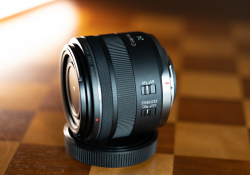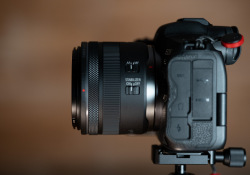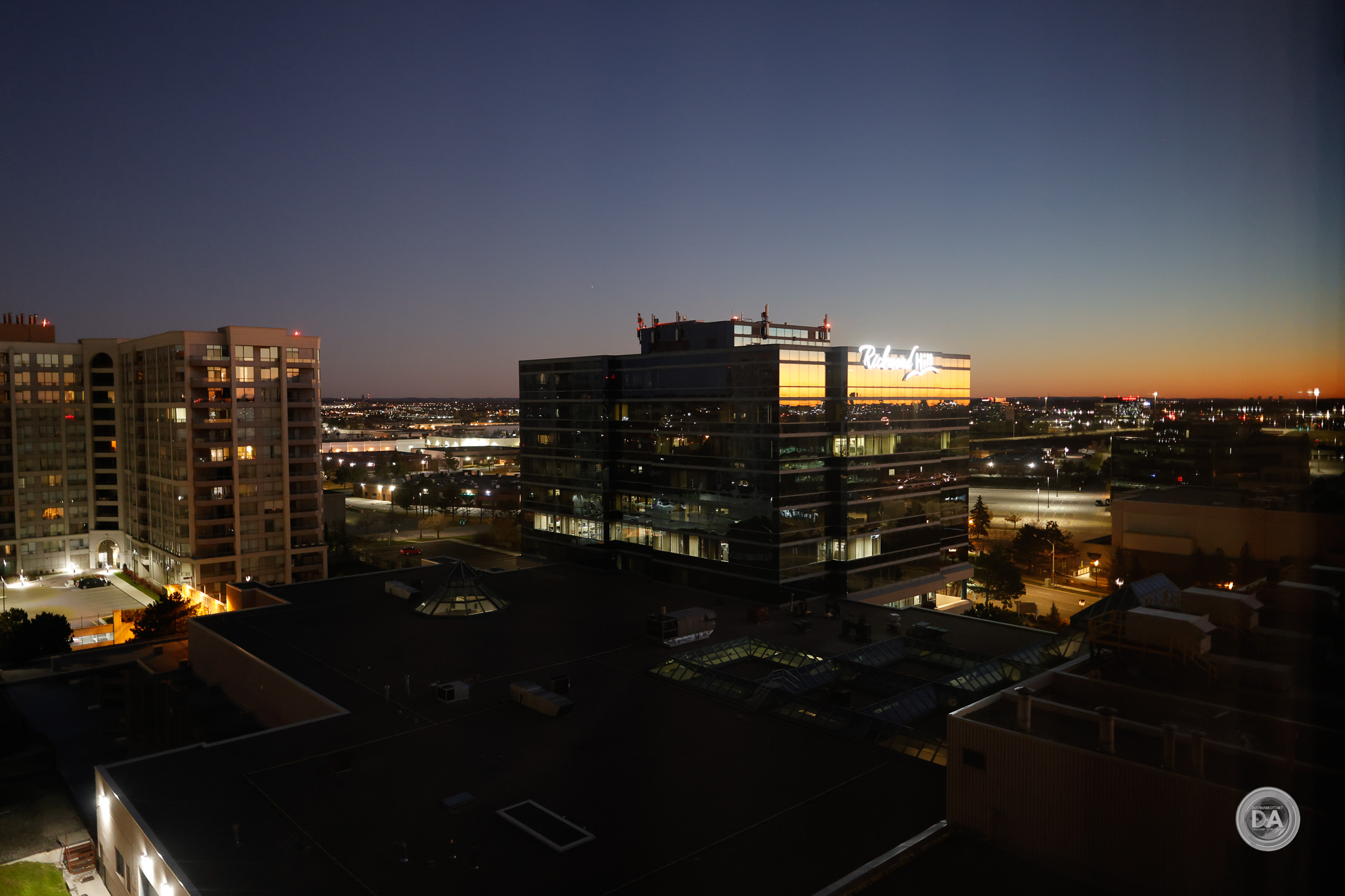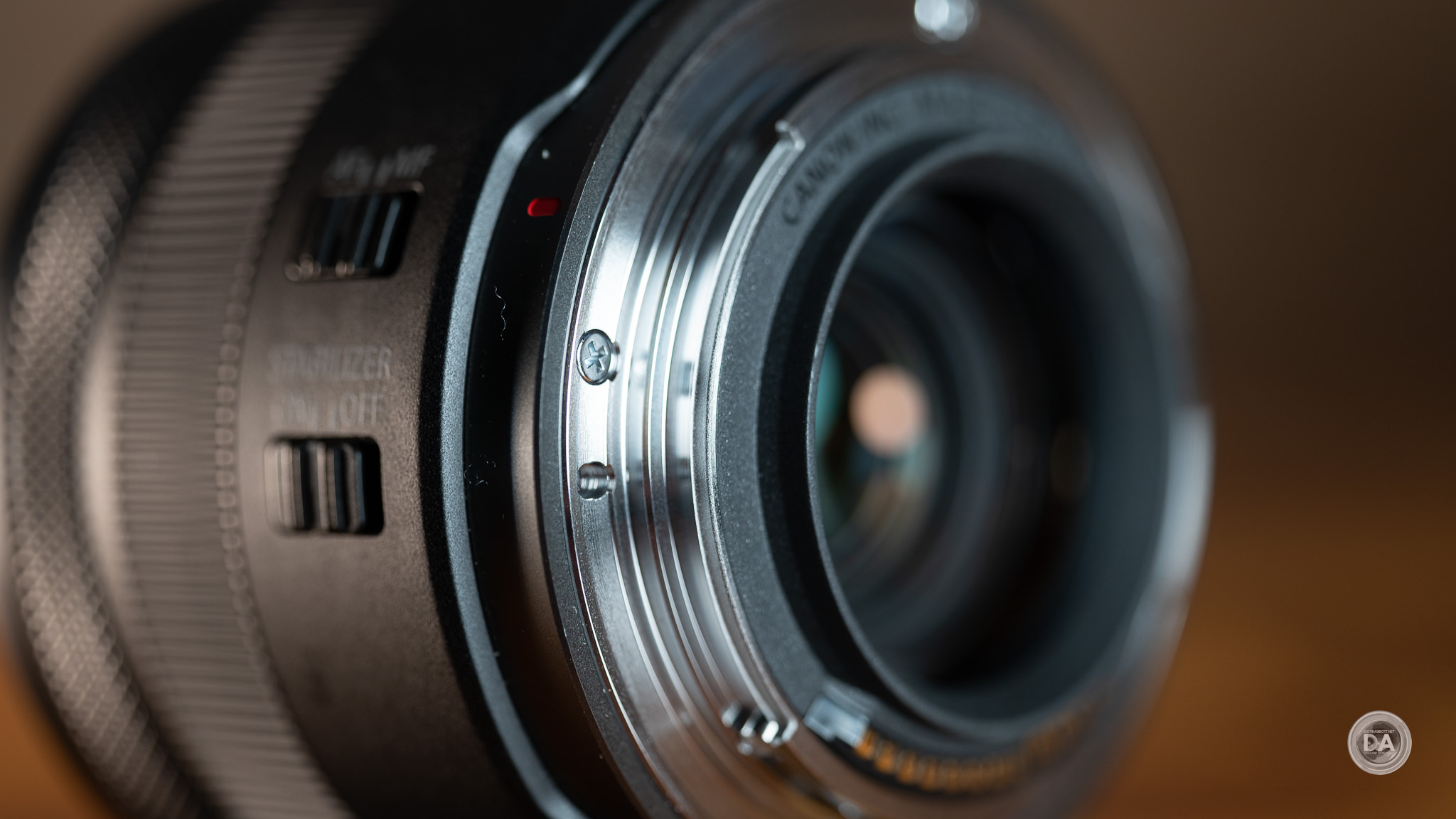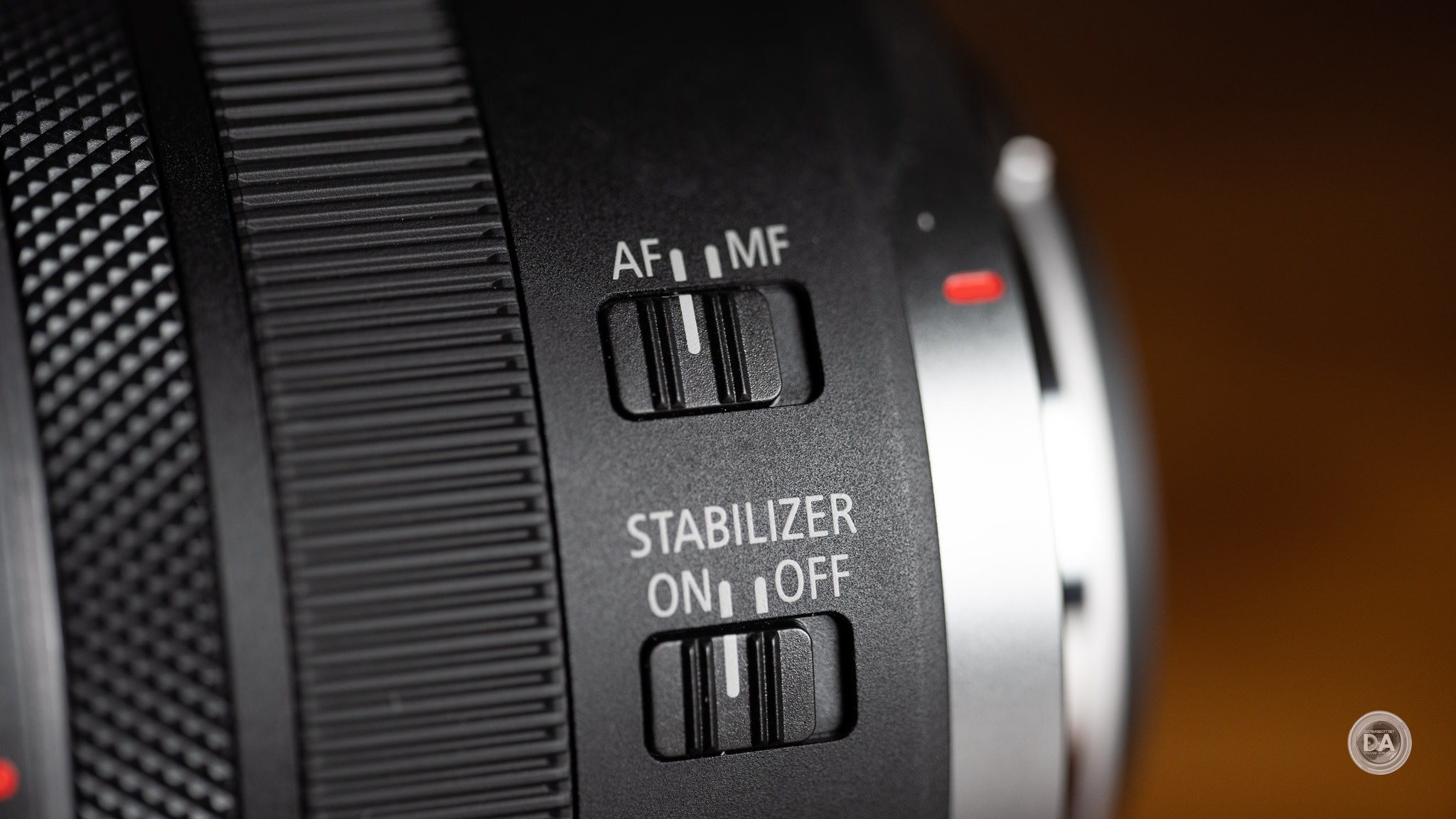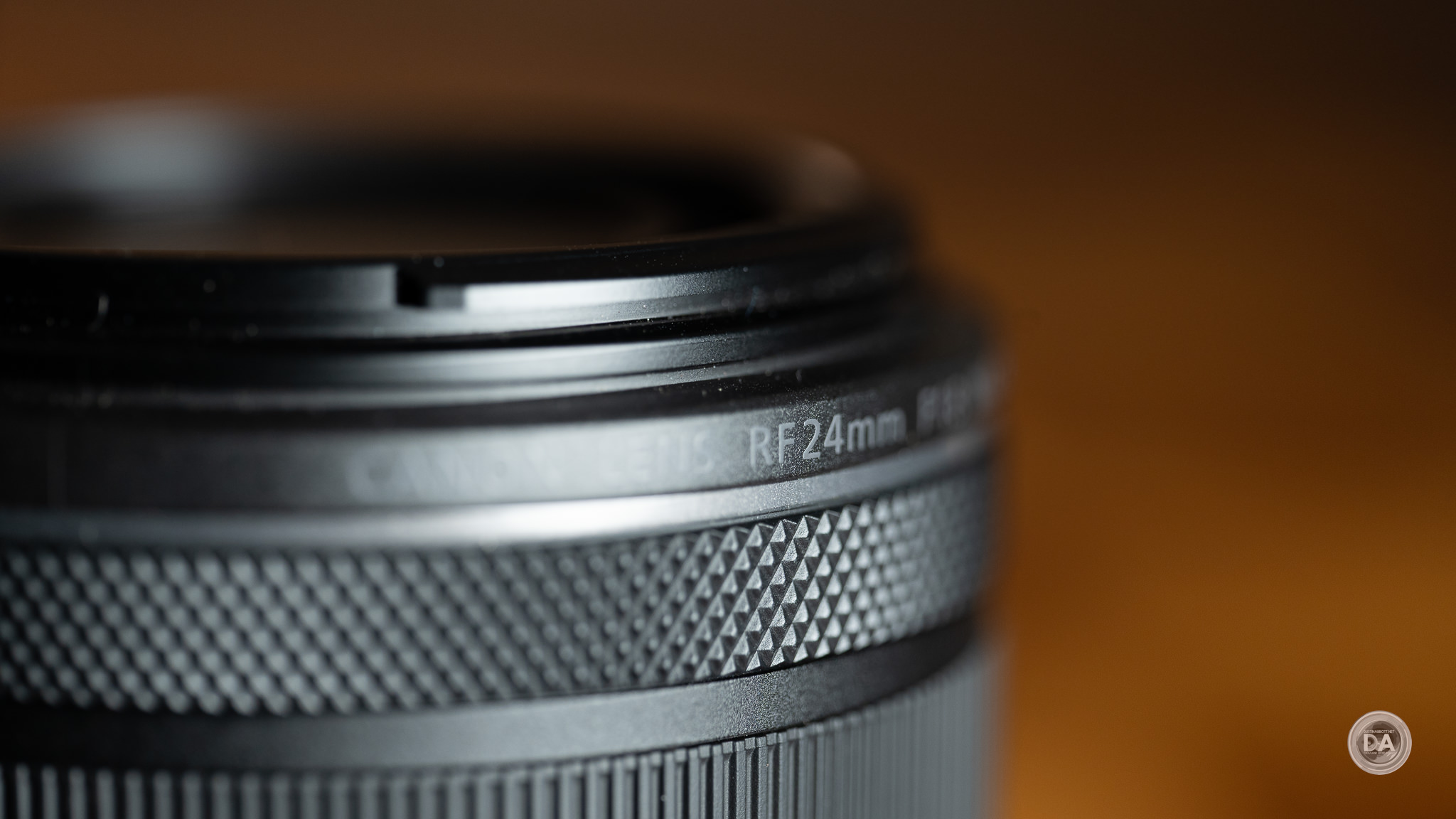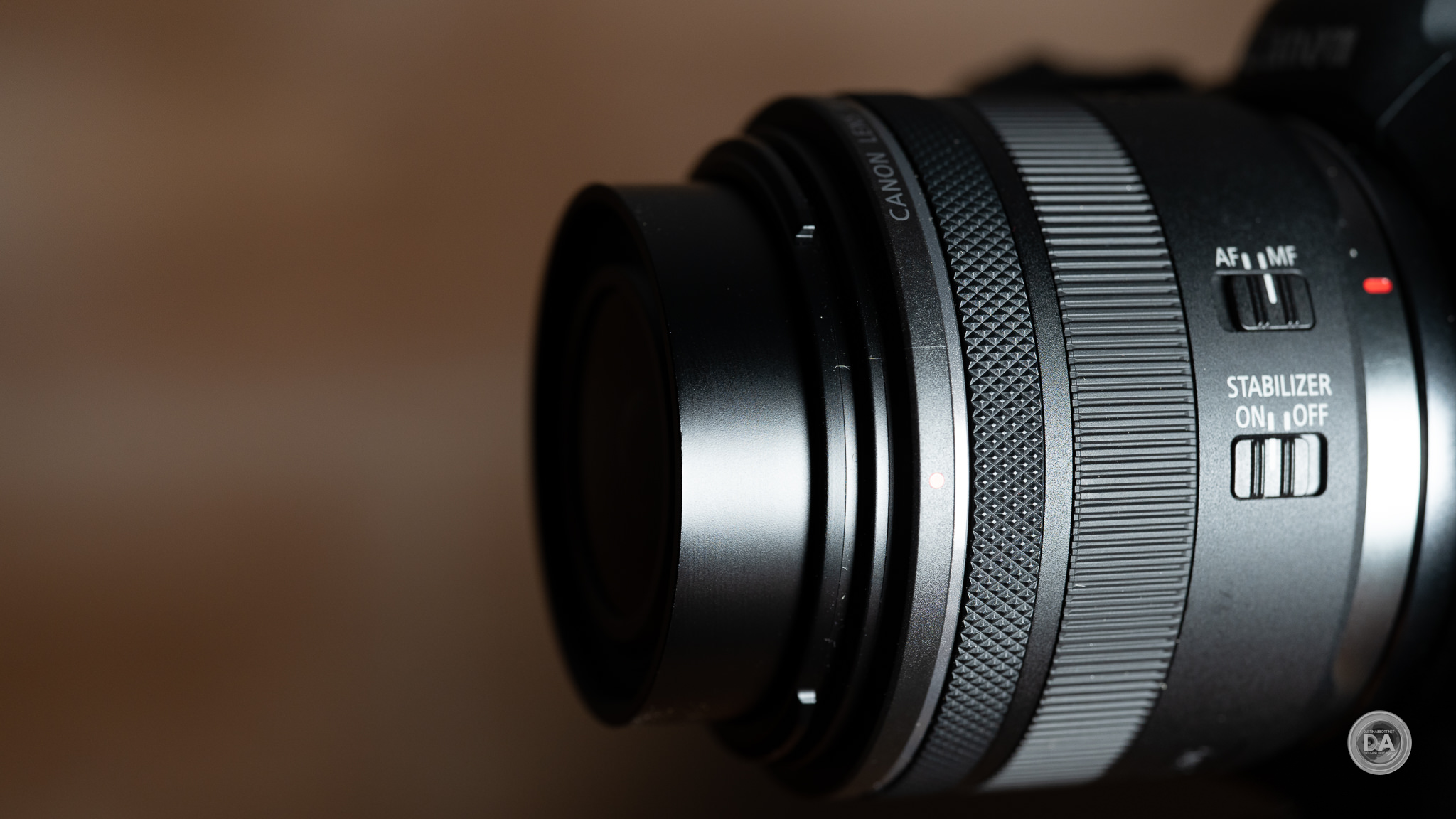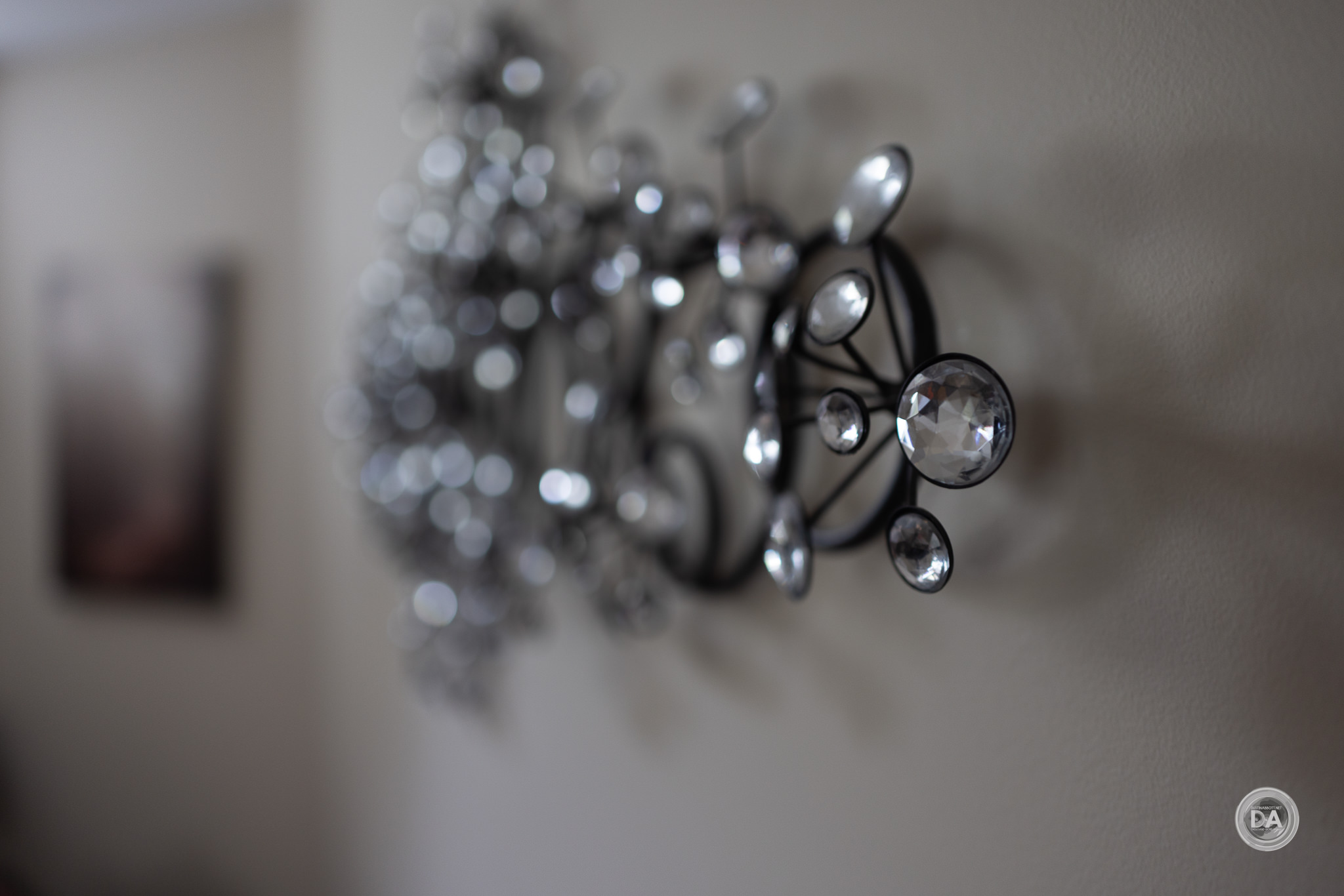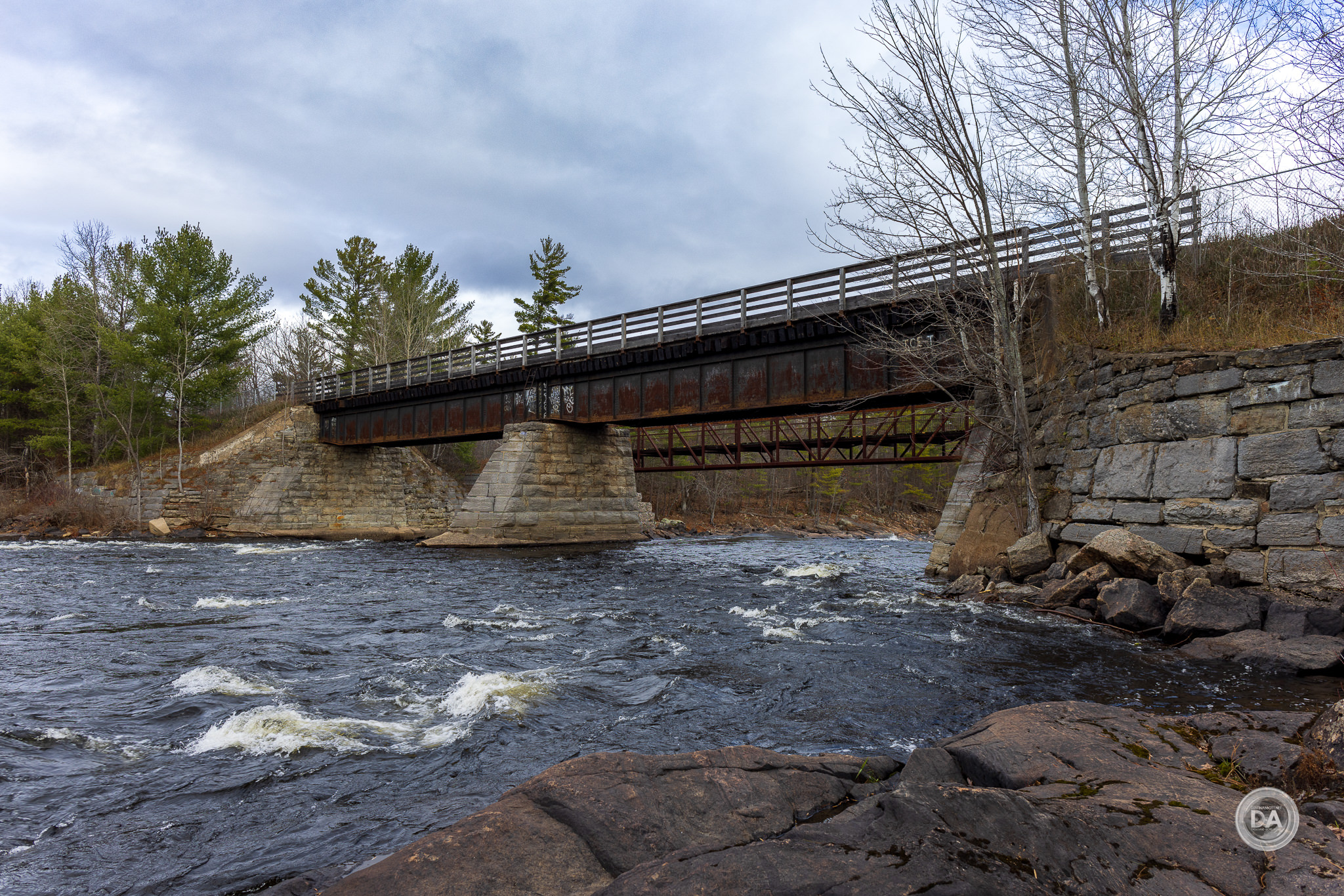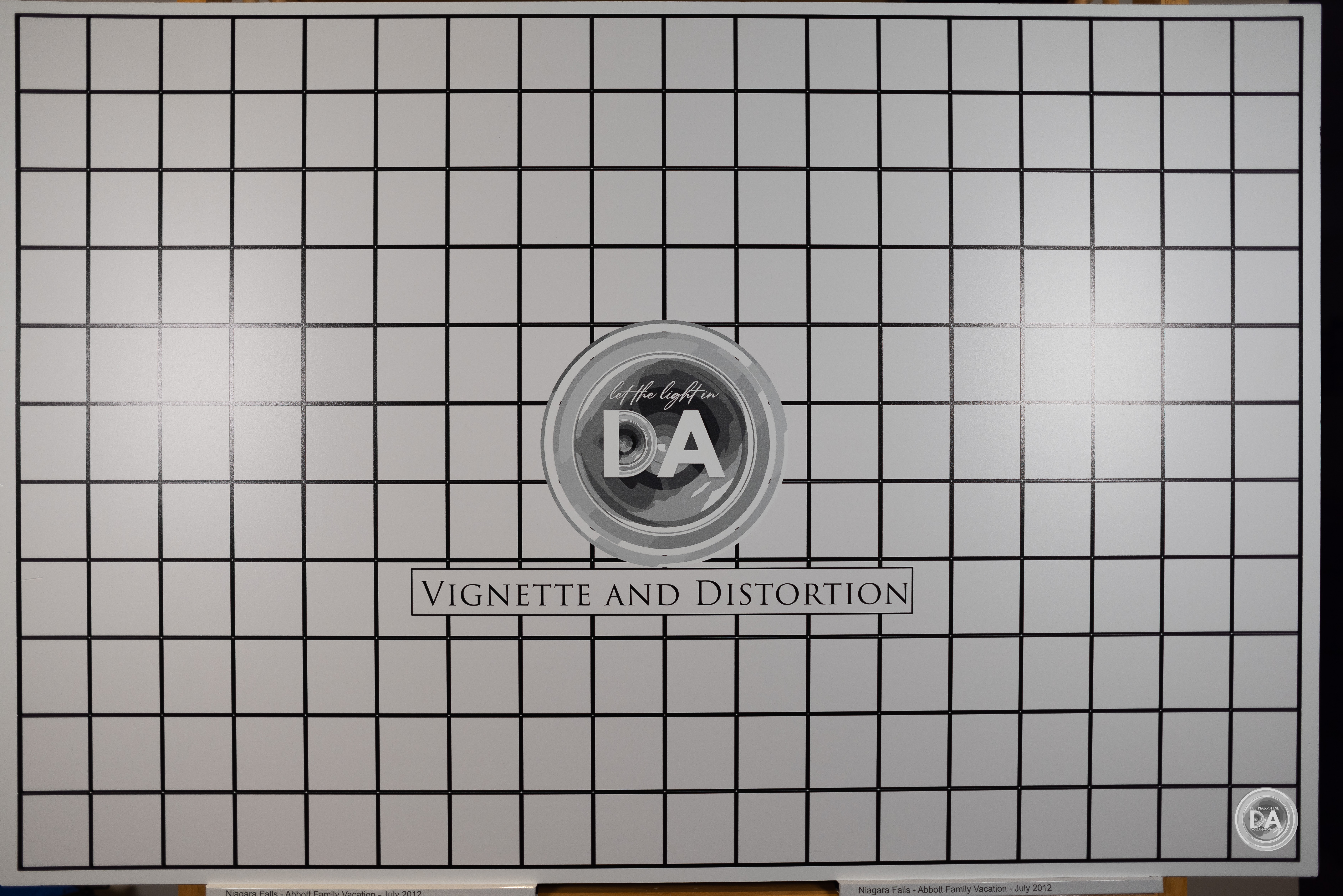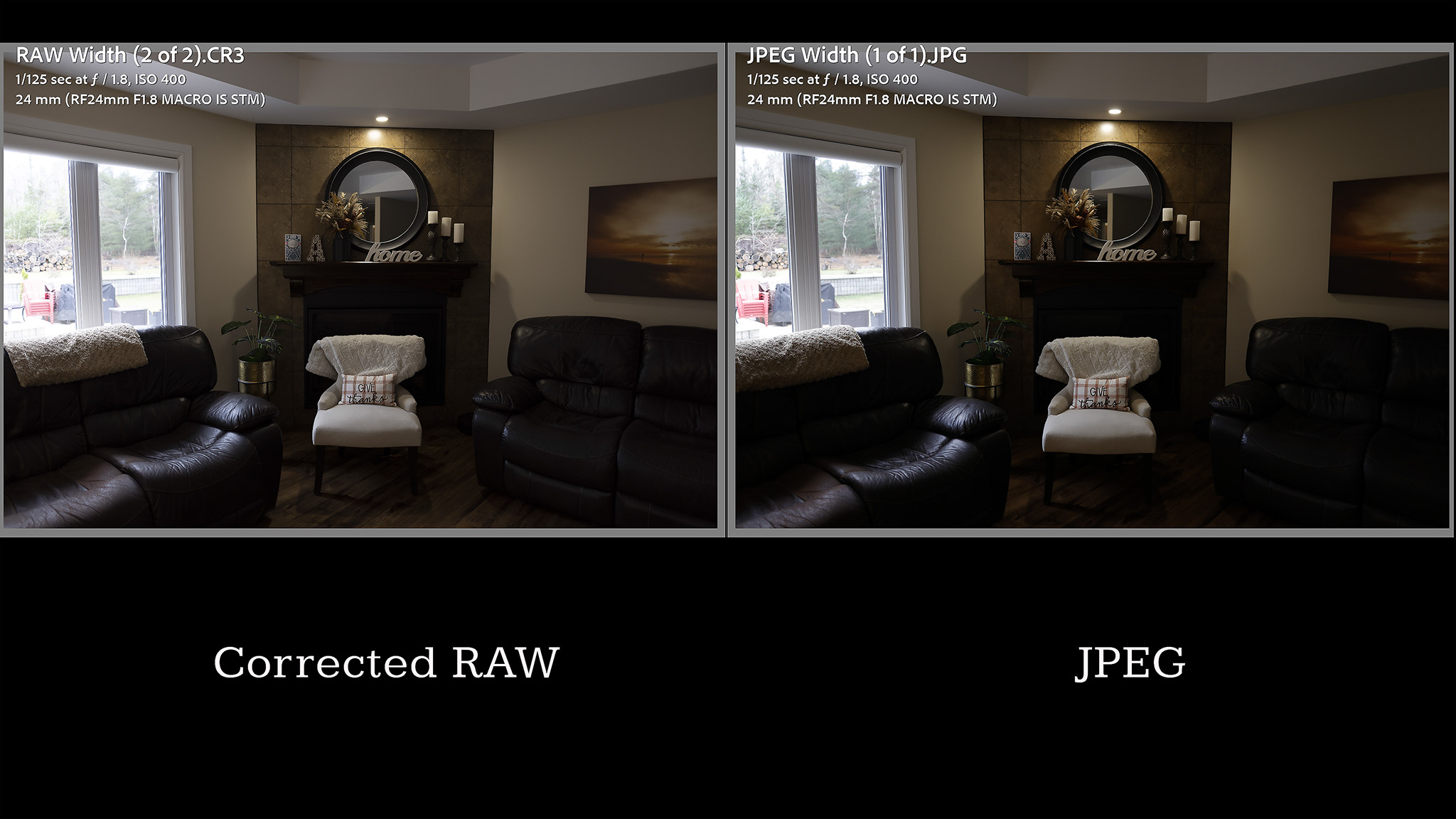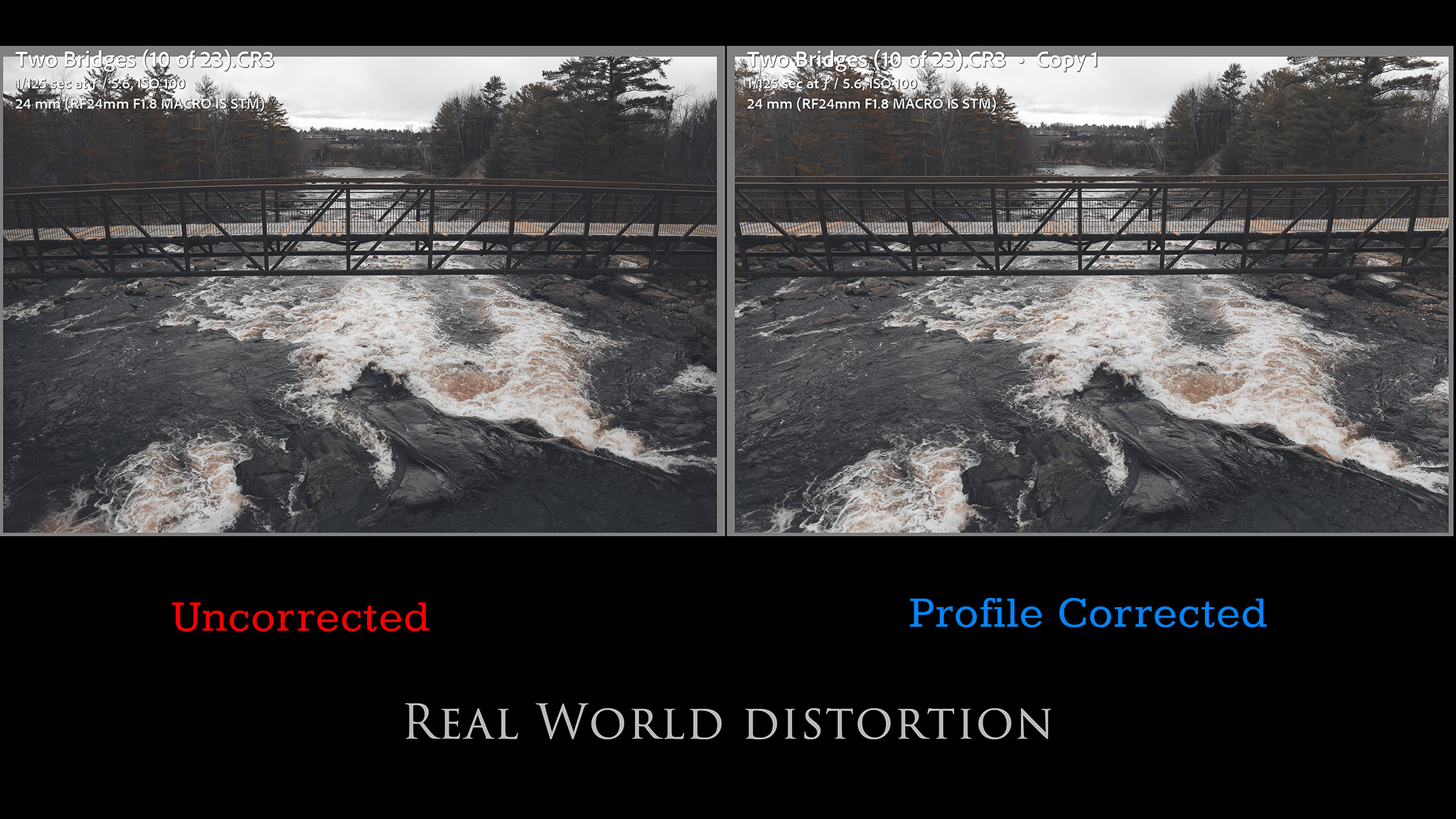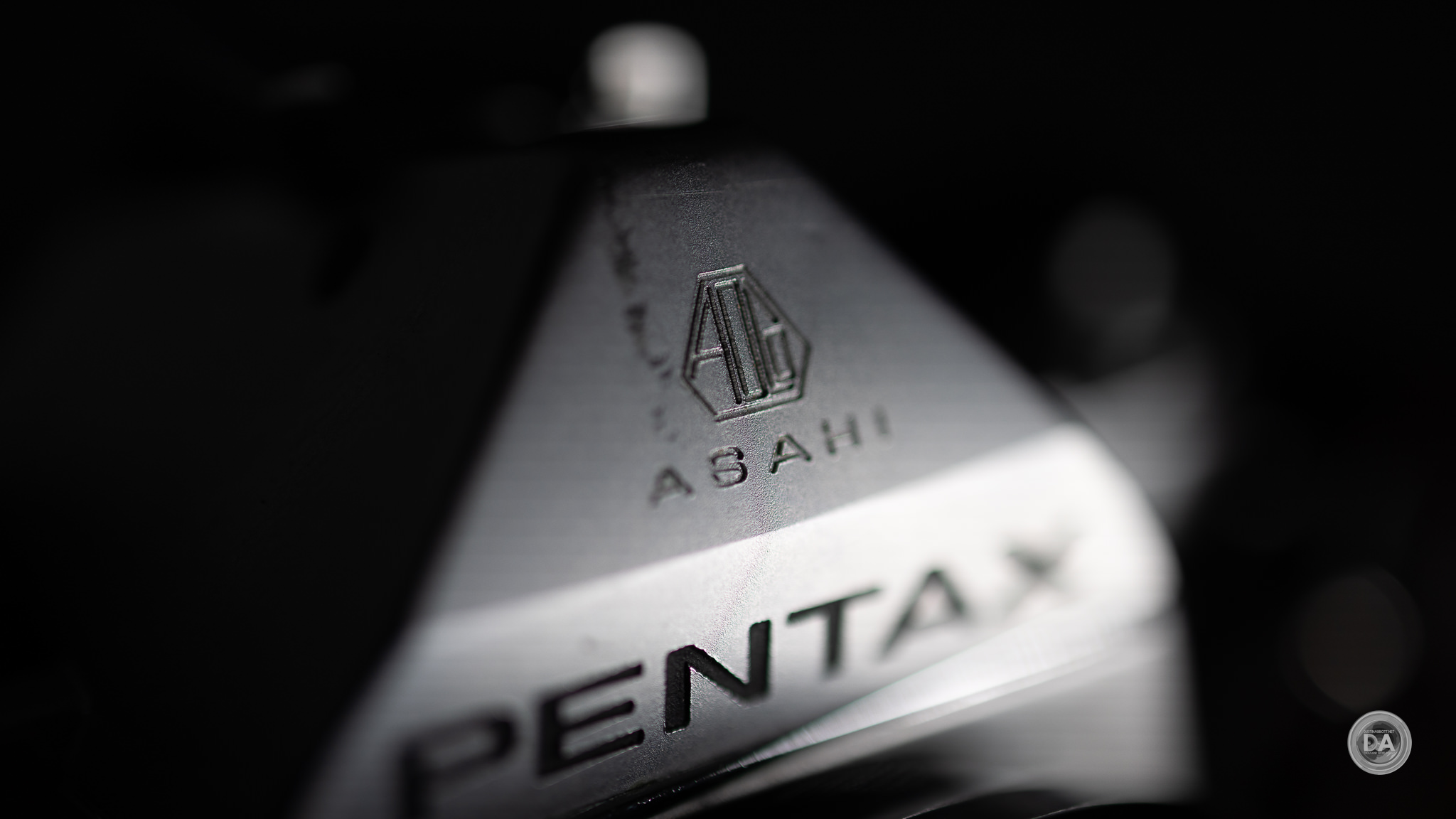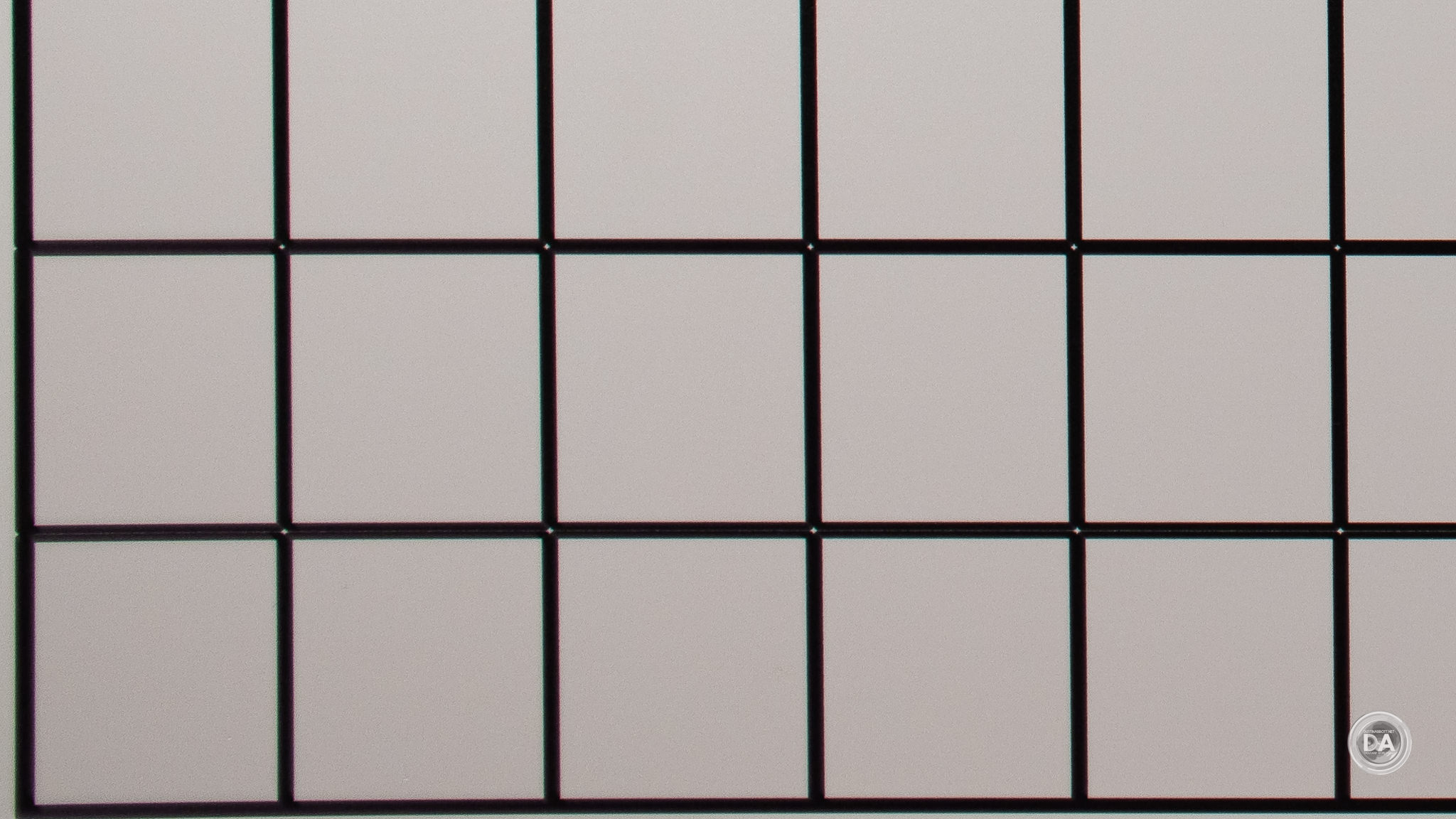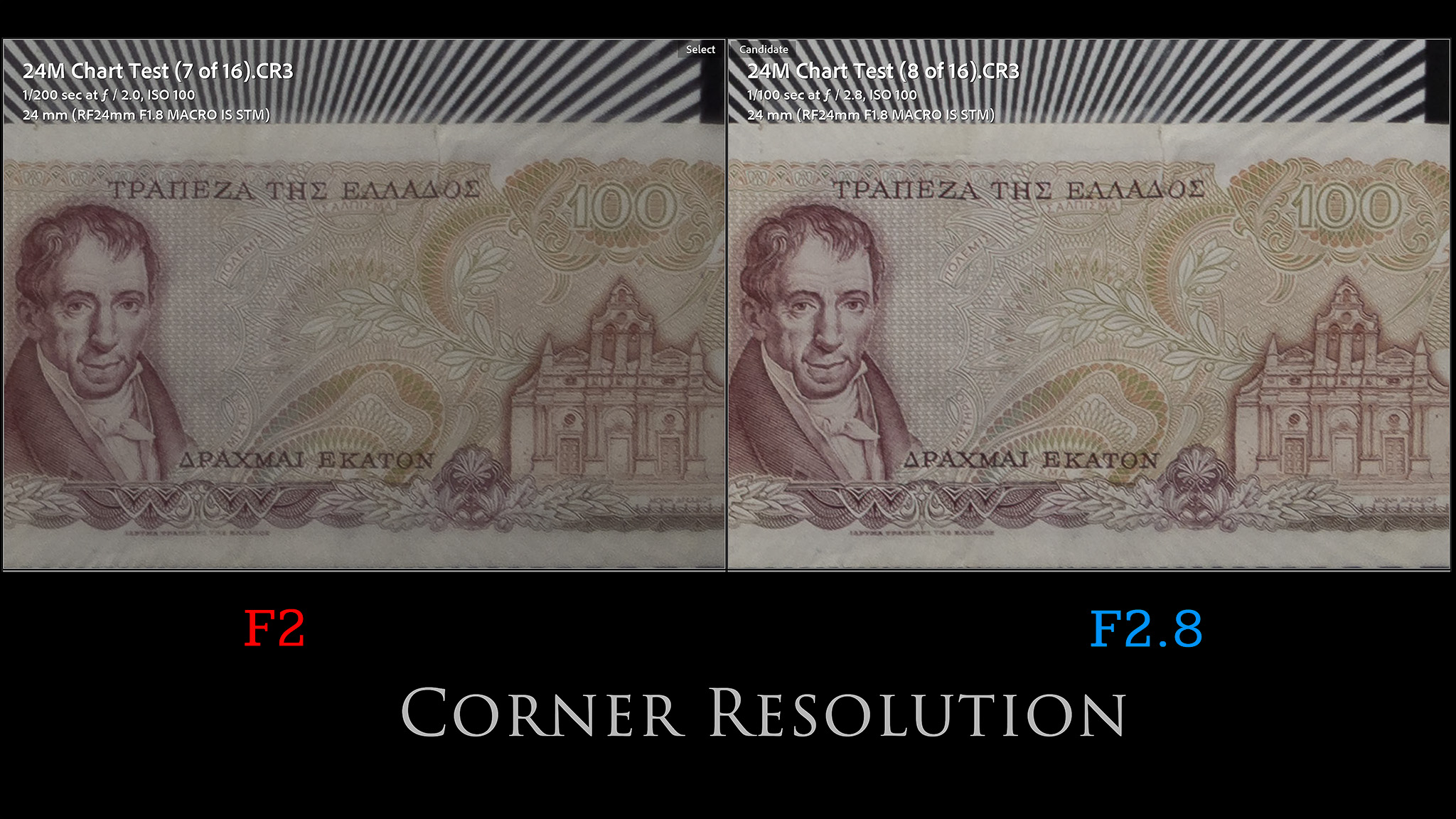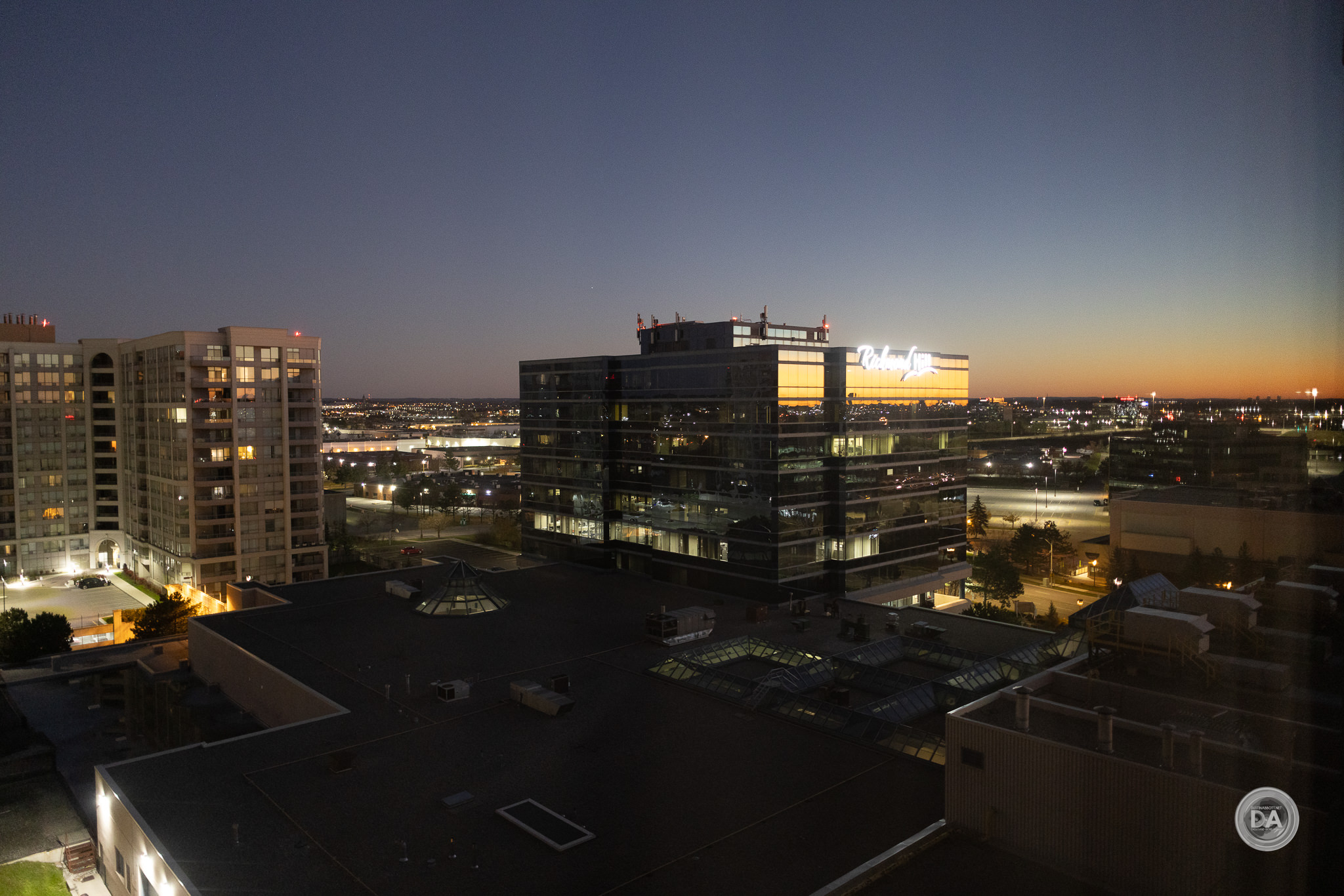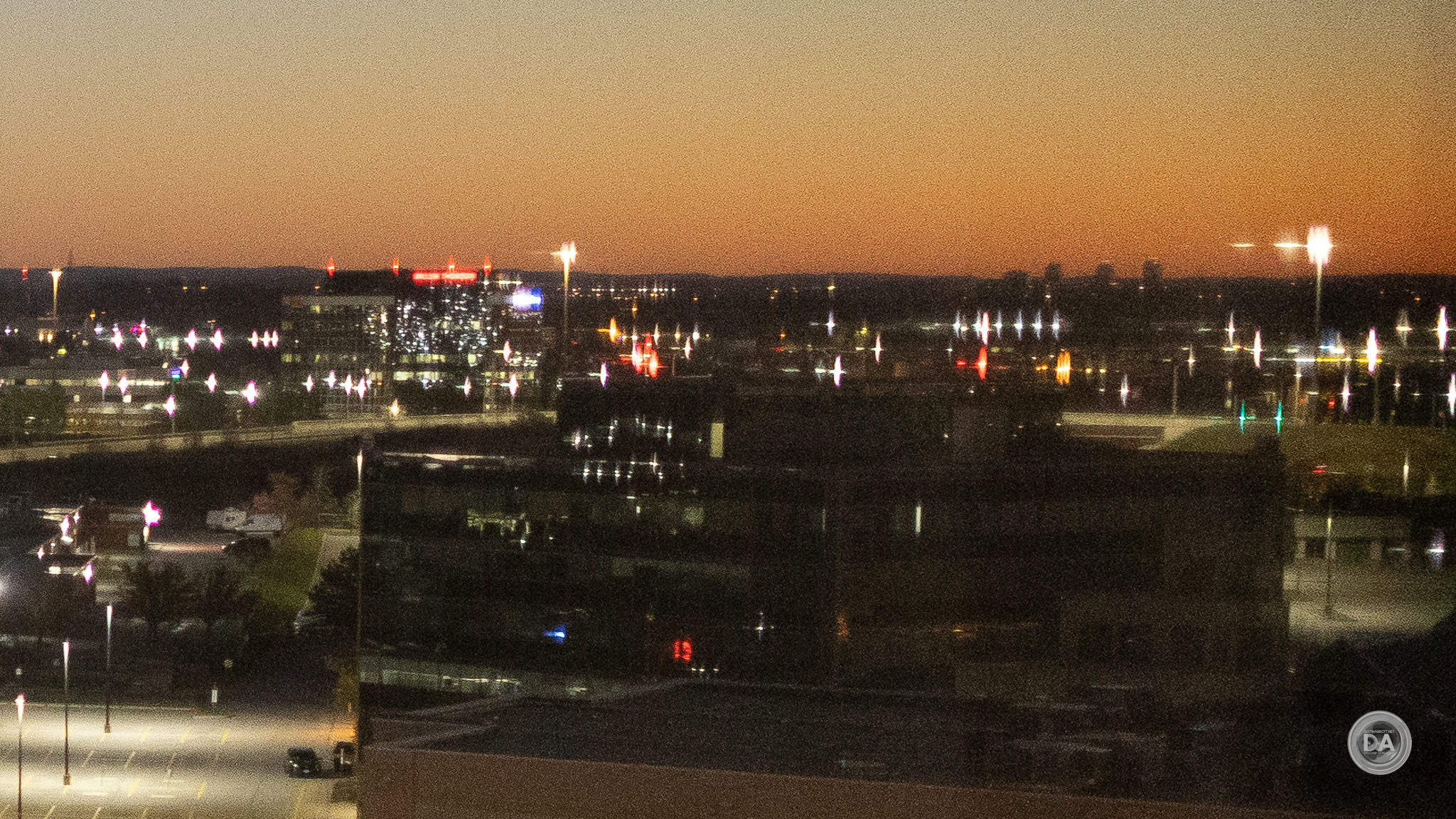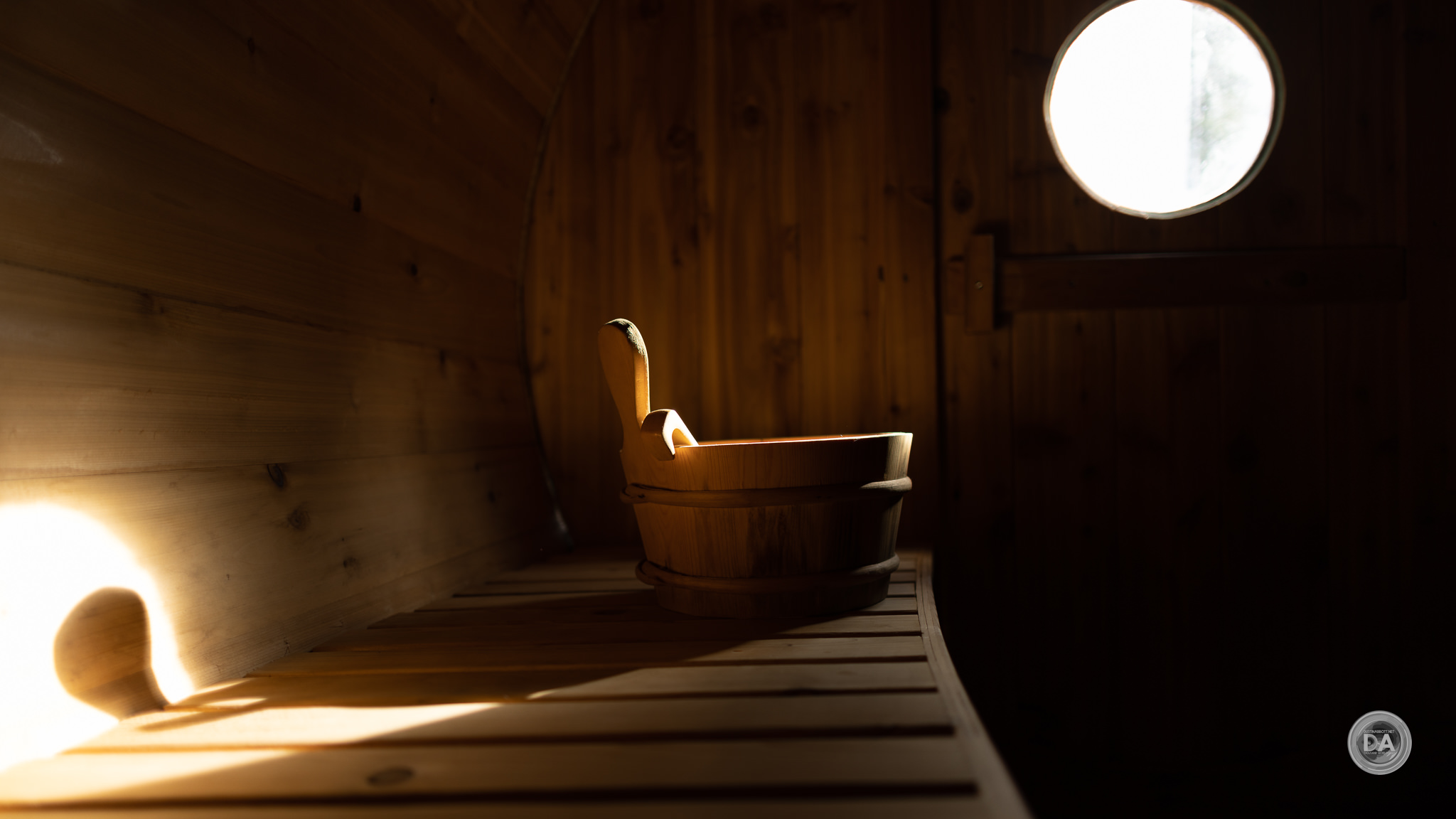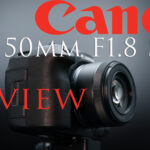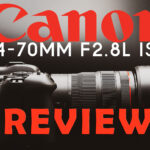One of my absolute favorite lenses in the Canon EF mount was the Canon EF 35mm F2 IS. I loved the form factor, the image quality, the great autofocus, and the very helpful Image Stabilization. It featured a nice magnification level of 0.24x, too, allowing for fun close up shots. This was the lens that I was reminded of when I pulled the new Canon RF 24mm F1.8 Macro IS STM lens out of the box. It has a very similar form factor. Of course, the RF24M (as I’ll call it for brevity in this review) is also highly similar to the Canon RF 35mm F1.8 Macro IS STM that I reviewed in 2019. Canon is slowly but surely starting to build out their lens catalog of decent lenses that aren’t $1500-3000 in price, and the RF24M at a price point of $599 USD joins the recent RF 16mm F2.8 (my review here), the aforementioned 35mm F1.8 Macro, and the RF 85mm F2 Macro IS (my review here) as lenses that that help fill that space.
The 24mm, 35mm, and 85mm lenses mentioned here all carry the designation of “macro”, but these aren’t 1:1 macro lens. They are 1:2 macro lenses, which means that they can only deliver one-half life size magnification, or 0.50x. That remains extremely useful, of course, but there are some limitations. Perhaps the greatest limitation is the fact they all of these lenses rely on extremely close focus to achieve their magnification, and that’s most extreme on the RF24M. Minimum focus distance is just 14cm (5.5”), but the problem is that the lens takes up 9 of those centimeters, and the inner barrel extends an additional centimeter at close focus distances. That leaves just 4 cm (about 1.57”) left between the lens and the subject, which means that it is very difficult to NOT shade your subject with the camera/lens, and you definitely will be scaring off any live critter you might have wanted to get a close focus shot of. Macro(ish) work is going to be better served by choosing subjects that won’t get scared off by close proximity to the camera…and that you have a means of getting some light on.
Fortunately Nala is not at all scared of the camera, and while this isn’t a macro shot, per se, it is probably my favorite photo I got with the lens during my review.
I was actually trying to get this shot of an old, rusty lock, but the curiosity of a kitten means that I cannot do any photography on the floor without interference. This gives you a little better sense of what you can achieve with close focus.
I’ve got some consistent gripes with Canon’s design and packaging philosophy with it’s non-L-series lenses, but I’m extremely happy nonetheless to see mid-level lenses like the RF24M come available. The R system needs a strong compliment of affordable lenses that aren’t just bargain optics but actually competent, and the RF 24mm F1.8 Macro IS seems to fill that role. I continue to disagree with Canon’s decision to close their platform (for now, at least) to third party lens development, but it is that in large part which makes lenses like this one so important.
Canon’s engineers have shown that they are capable of producing very sharp wide angle lenses in recent years, though at the cost of certain other optical flaws – namely vignette and distortion. That very much remains true here, but the RF24M is also a very flexible tool that can create some great images. Many people love the RF 35mm F1.8 Macro IS, and the new 24mm gives a similar lens with a different focal length that some prefer. If that happens to be you, you can read this text review or watch my video review to help decide if the RF 24mm F1.8 Macro IS STM should be the next lens for you.
Follow Me @ Patreon | My Newsletter | Instagram | Facebook | Twitter | Flickr | 500px
Thanks to Camera Canada for getting me a loaner of the RF 24mm F1.8 Macro IS. If you’re in Canada, check them out for a reliable online retailer. *The tests and most of the photos that I share as a part of my review cycle have been done with the 45MP Canon EOS R5, which I reviewed here.
Canon RF 24mm F1.8 Macro IS STM Build and Handling
The RF24M is, in concept, the kind of lens that I love. It is reasonably compact at only 2.9″ (74.4mm) in diameter and 2.5″ (63.1mm) in length and weighs in at a diminutive 9.5oz (270g). It is nearly identical in size to the RF 35mm f1.8. They both share a common 52mm front filter thread as well. The lens profile is that squat prime look that frankly looks really good on the camera.
The combination of a 24mm focal length (a preferred walk-around focal length of many) along with the extremely close focus abilities of the RF24M make it an extremely versatile option, and the compact size and light weight make it an easy lens to pack along.
While Canon has moved to including IBIS (In Body Image Stabilization) in almost all of their newer cameras they also continue to value in-lens stabilization (IS). The IS in the lens is rated for 5 stops but works in conjunction with IBIS (if your camera is so-equipped) and Canon rates the combined stabilization of up to 6.5 stops of correction. Tack sharp results at shutter speeds like the 1/10th or 1/15th of a second are effortless, as shown here:
You can go even slower, obviously, but it’s rare situations where I feel the need for extremely low shutter speeds handheld. In this case, however, it allowed me to stay at ISO 3200 for this shot rather than jacking up the ISO to noisier values.
The RF24M has Canon’s typical consumer-grade build quality. It feels better than the budget EF 50mm F1.8 STM but not at the level of most recent third party lenses from Tamron and Sigma on other platforms.. The RF24M unfortunately highlights the fact that Canon seems intent on persisting in one of their more foolish trends – not including weather sealing or a lens hood on non-L series lenses. This policy seems even more archaic when one considers that essentially all the competition at any price includes a lens hood, and I’ve also noted that weather sealing of some kind is now included on more lenses than not. Canon’s policy was fine back in the day when third party alternatives were budget options that were typically rough around the edges, but in the modern market, many third-party lenses are extremely competent and are often more polished than first party alternatives. I think Canon is doing itself a disservice here, as in many cases people will not purchase a separate lens hood (the EW-65B costs an additional $50) and thus never get the basic benefit of a lens hood (added flare resistance and protection of the lens). Vello makes an inexpensive alternative hood for about $15.
The body design of the RF24M is engineered plastics around a metal lens mount. It has a matte finish that is similar to other recent Canon lenses and also has the additional stylish platinum accent area that matches where the lens mounts to the camera body.
There are two switches (On/Off for the IS and AF/MF) on the side of the barrel. They are low profile (no inadvertent bumping) and move precisely. There is also a manual focus ring located in the center of the lens. This being a mirrorless lens with an STM focus motor, there is not direct mechanical coupling to the lens elements, so manual input on the focus ring is routed through the focus motor (focus-by-wire). As per usual, there are limitations to this approach, including less tactile response and no hard stops in either direction. On a positive note, the camera body will show an electronic distance scale on either the viewfinder or the LCD when input is detected, so this helps.
The RF standard control ring is located near the front of the lens and can be programmed in camera to a variety of different functions. A couple practical ones to me include Aperture (you can use it essentially like an aperture ring) and (my current choice) Exposure Compensation. The control ring has a different texture to it than the manual focus ring to help distinguish between the two.
There are nine rounded aperture blades in the aperture iris, and this does a fairly good job of keeping a circular shape as the lens is stopped down. Here’s a look at the bokeh geometry at F1.8, F2, and F2.8.
Even at F2.8 you can see very little of the aperture blade shape.
As noted, The RF24M is not entirely an internally focusing lens, though most all of the barrel extension comes in the “macro” range. You will probably want to enable the “Retract Lens on Power Off” setting to make sure that the inner barrel is not extended during storage. It feels like that could be a point of vulnerability.
In many ways the build quality of the RF24M is fine. I suspect the lens will be durable and it handles nicely. I like the form factor. What I don’t love is that Canon continues to expect the market to be fine with them offering less for the $600 USD price tag. No weather sealing, no lens hood, no case or pouch. I know that they are capable of better!
Autofocus and Video Performance
Canon has given the RF 24mm F1.8 a Lead-Screw-type STM motor, which is the more robust version of STM that Canon employs. The Lead-Screw STM are typically faster and quieter than the cheaper Gear-Type STM motors, and, while I don’t like either as well as Canon’s Nano-USM lenses, the autofocus performance of this type of STM motor is clearly better than the cheaper version.
For many applications, the speed and quietness is just fine. I noticed little focus noise during normal operations. Eye AF works very accurately and makes this an appealing option for vlogging and moving with the camera an arm’s length away. I found that even just handholding the camera and lens (EOS R5) made for a fairly stable and natural environment for moving around in. I saw good accuracy with both human and animal subjects.
Most focus changes for stills happen quickly and without much drama. The lens is not completely silent in focus, but sound is minimal. And, most importantly, I saw very good focus accuracy.
I shot in several different low light situations with the lens and found that focus continued to be confident, though there could be a little more hunting if it didn’t find a good contrast edge. This shot has the added benefit of being only 1/4th second shutter speed, which shows off the solid IS performance as well.
Things are a little less rosy for video. Video focus pulls are mostly smooth, but they are certainly not fast. Even when doing the test when I put my hand in front of the camera and allowing focus to then snap back to my eye there were was some delay before focus began to move to the desired spot. I didn’t notice a significant amount of focus breathing, though there is a bit.
The focus system is not the peak of sophistication (there’s more noise and less torque than the best modern focus systems), but in general focus was accurate along with being fairly smooth and quiet. I have no major complaints here.
Canon RF24M Image Quality
I was unable to find an MTF chart for the RF 24m F1.8 Macro IS STM, but I will obviously share my own findings. In general I felt like the results from the lens were quite good, but there is some unfortunately familiar Canon optical flaws.
The worst of these is going to be found when we look at the vignette and distortion results.
Canon has become completely dependent on electronic correction in too many of their lenses – even some L-series lenses. It’s not unusual (as it is here) to find that you have framed something like my chart in the viewfinder and then find that the RAW image is actually considerably wider than what I saw in the viewfinder or on the LCD. There is a strong amount of barrel distortion without the correction.
I had to dial in a fairly massive about of correction here (a +33) to correct the distortion and nearly maxed out the slider to correct for the vignette. What’s unusual for a lens with so much distortion, however, is that the nature of the distortion is very linear. I was able to achieve a nearly perfect manual correction, which was a pleasant surprise. Also interesting is that the fully corrected image is still considerably wider than the profile corrected image. I just did a “constrain crop” that removes the distorted portion of the image left after correction, and got a file output of 7536 x 5026 (about 37MP):
If I crop to the same dimensions as the JPEG image (what I saw in the viewfinder) I end up with dimensions of 6978 x 4657 (about 32.5MP).
What’s interesting is that the RAW image that receives the profile correction outputs at full size (45MP), though clearly the image has been deeply cropped from the original RAW (which is somehow the EXACT same size!). The only solution to this is that there is some upscaling that takes place after the correction/crop, and, sure enough, if I look at my manual corrected and cropped file at 100% and compare it to the outputted file with the profile correction, the detail looks better in what I’ve manually outputted.
Hmmm. Pro tip. If you want a wider perspective, shoot in RAW, manually correct, and then just “constrain crop”. You end up with significantly more in the frame, which could be very useful when shooting interiors or even landscape shots. You can see what I mean if you compare the edges of the frame in this comparison where I’ve used that technique.
The good news is that as a first party lens, it receives “Cadillac” profile treatment. The correction profiles in camera (JPEG and Video) are augmented by excellent profiles in Lightroom and other software for RAWs. I don’t love this approach, but we are going to have to accept the reality that Canon is designing lenses like this with the idea that electronics are part of the process to give the desired optical result. You can see that the “curved bridge” becomes a “straight bridge” after the correction profile is added.
There are limits. You’ll want to be careful about putting people near the edge of the frame as the act of correcting will stretch and distort them.
Because the correction works well, however, it will do in a pinch for shooting interior spaces, though obviously a lens with lower native distortion is a more logical choice if your shooting priorities include real estate or architectural work.
You are also always going to want to correct the vignette in most all situations, which is fine other than the fact that you can end up with some additional noise in the edges of the frame when correcting at higher vignette. Bottom line is that this is a lens (much like the 14-35mm F4L IS, the 16mm F2.8, and the 35mm F1.8) are VERY reliant on profile corrections.
Longitudinal chromatic aberrations (LoCA) typically show up as purple/magenta fringing before the plane of focus and blue/green fringing beyond the plane of focus due to colors not being perfectly focused together. They typically diminish as the lens is stopped down to smaller apertures. The RF24M does show a bit of LoCA (like you can see above in this crop from a macro shot of my Dad’s old camera) but I didn’t find it overly destructive, either.
This shot of dried weeds with light pouring through them is about the worse that I could find.
Lateral chromatic aberrations (LaCA) are a little less pronounced. They show up as fringing on either side of contrast areas (like tree trunks, for example) along the edges of the frame. Unlike LoCA, they do not improve when stopping the aperture down, but are much easier to correct for (typically a one click “remove chromatic aberrations” box in editing software). There’s a minor amount of Lateral CA near the edges of the frame.
There are 11 elements in 9 groups here including a UD (ultra-low dispersion) element and one aspherical lens in the optical formula.
Does that do the job for optical performance? Here’s a look at my chart globally at F2.8, taken with the 45MP Canon EOS R5:
The following are near 200% crops from the center, mid-frame, and extreme lower right corner.
What we find is exceptional resolution and contrast in the center, very good performance in the mid-frame, and really a quite decent corner performance. This is a slightly better than expected optical performance, and I think it is backed with real results. Look at how crisp the textures are on Ferrari here.
Likewise this landscape shot at F1.8, which looks great in the center and still fairly good on the edges.
Stopping down to F2 produces slightly higher contrast across the frame, with a bigger jump happening at F2.8. There’s quite a noticeable difference in corner performance from F2 to F2.8:
There’s very slight additional gains at F4 and F5.6, and very slight regressions at each stop after that. At these landscape apertures details look crisp across the frame:
But in real world use, I’m pretty delighted by the amount of sharpness I get on my high resolution R5, and the lens would look even better on less punishing lower resolution bodies.
This autumn leaf shows nice detail and a fairly soft background beyond.
Let’s talk about the bokeh quality. This isn’t an L-series lens in terms of the optical performance, but frankly the bokeh quality isn’t bad. In some situations it is nice and soft:
Generally the closer you are to the subject the better the bokeh quality, as things can get a little busy in the transition zone:
Here’s a few more samples at difference focus distances to let you evaluate it for yourself.
As noted, this is called a macro lens though some debate whether a 1:2 level of magnification constitutes true macro. At the least, however, a 1:2 magnification (0.50x) is still extremely useful, allowing you to fill the frame with subjects (like my standard bill from my test chart).
This link of rusted chain stands out nicely isolated from the rest of the strand.
Maybe not true macro, but definitely useful!
Canon claims that the lens has received Super Spectra coatings that improve the resistance to flare. Flare resistance is fairly good, with only some minimal ghosting artifacts and no veiling. The sunburst from the 9-bladed aperture is pleasing as well.
While I didn’t get to shoot stars during my review period, I did shoot a city scene and found some less than desirable results along the edge of the frame.
There are better astro options out there.
So, not a performance without flaws, obviously, but also with some real strengths (and versatility), and in general I was happy with the kinds of images I could get with the RF24M and how they looked.
As always, I would recommend that you check out the image galleries to see a greater variety of photos and get a sense of the lens performance for yourself.
Conclusion
I didn’t love the Canon RF 35mm F1.8 Macro IS when I reviewed it, and while the RF 24mm F1.8 Macro IS STM is similar in so many ways, I actually feel more positive about it. Yes, it has way too much distortion and vignette, but it also nice and strong in a lot of different areas, including delivering a fairly strong macro performance.
What really stands out is the versatility of a lens like this. You can do a LOT of different photography with a lens like this, from up close work, to walk around and street, to landscape and environmental portraits.
The RF24M is not going to compete with L series lenses optically, but I also found that images had a fairly good pop to them and I generally liked the look of them other than shots where the bokeh got a little busy. Some people love the 24mm focal length, and if that describes you, then the Canon RF 24mm F1.8 Macro IS STM is a lens that will probably become a favorite even if also sports a few flaws.
Maybe you’ll want to go out and grab one…like this:
Pros:
- Lovely form factor
- Extremely versatile lens
- Focus accuracy is very high
- Stable AF tracking on eyes for vlogging
- Good up close performance
- Good wide open performance
- Good flare resistance
- Good color
Cons:
- Extreme distortion
- Very heavy vignette
- Coma performance isn’t good
- No lens hood or weather sealing
Gear Used:
Purchase the Canon RF 24mm F1.8 Macro IS @ B&H Photo | Amazon | Camera Canada | Amazon Canada | Amazon UK | Amazon Germany
Purchase the Canon RF 35mm F1.8 IS STM @ B&H | Amazon | Camera Canada Amazon Canada | Amazon UK | Amazon Germany | Ebay
Purchase a Canon RF 85mm F2 Macro IS STM @ B&H Photo | Camera Canada | Amazon | Amazon Canada | Amazon UK | Amazon Germany | Ebay
Purchase a Canon EOS R5 @ B&H Photo | Amazon | Camera Canada | Amazon Canada | Amazon UK | Amazon Germany | Ebay
Purchase a Canon EOS R6 @ B&H Photo | Amazon | Camera Canada | Amazon Canada | Amazon UK | Amazon Germany | Ebay
Want to support this channel? Use these affiliate links to shop at: B&H Photo | Amazon | | Camera Canada | Ebay | Make a donation via Paypal
Buy DA Merchandise https://bit.ly/TWIMerch
Peak Design Leash Strap: Peak Design Store | B&H Photo | Amazon | Amazon Canada | Amazon UK
Adobe Photoshop Creative Cloud 1-Year Subscription
Get a discount off all Skylum Editing Software (Luminar, Aurora HDR, AirMagic) by using code DUSTINHDR at checkout:
Visit Dustin’s Amazon Storefront and see his favorite gear
Purchasing your gear through B&H and these links helps fund this website and keeps the articles coming. You can also make a donation here if you would like. Visit my Amazon page for some of my gear of choice! Thank you for your support.
Purchasing your gear through B&H and these links helps fund this website and keeps the articles coming. You can also make a donation here if you would like. Visit my Amazon page for some of my gear of choice! Thank you for your support.
Receive a 5% discount on all purchases at Amplis Foto, Canada’s Leading Photographic Supplier. Please enter discount code: AMPLIS52018DA in your cart. It is good for everything in your cart, and is stackable with other coupons, too! It will take 5% off your entire order! Proceeds go towards keeping this site going and providing you with new reviews!
Use Code “DUSTINHDR” to get $10 off ($15 CDN) any Skylum product: Luminar, Aurora, or AirMagic
Keywords: Canon RF 24mm F1.8, Macro, IS, Canon RF 24mm F1.8 Macro IS STM, Canon RF 24mm Review, Review, STM, F1.8, RF, F/1.8, Canon RF 24 Review, Canon EOS R5, EOS, R5, EOS R5, Canon EOS R6, EOS R6 Review, mirrorless, full frame, EOS R5 Review, Canon R5 Review, Canon EOS R5 Review, Dustin Abbott, Real World, Comparison, Handling, Focus, Portraits, Resolution, High ISO, Image Quality, Sample Images, Photography, 45Mpx, 45MP, Canon, letthelightin







